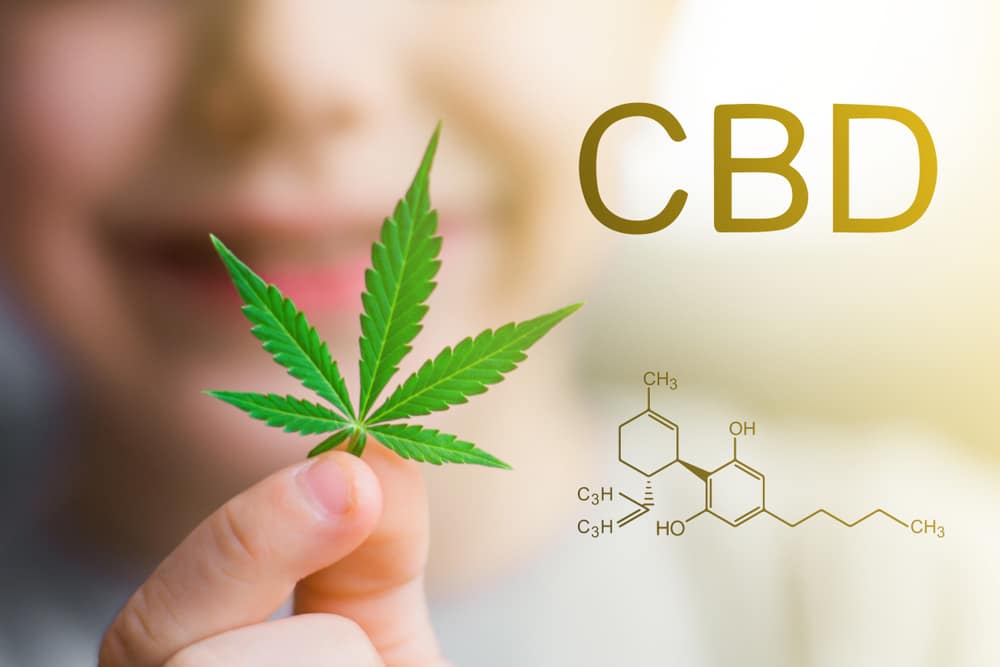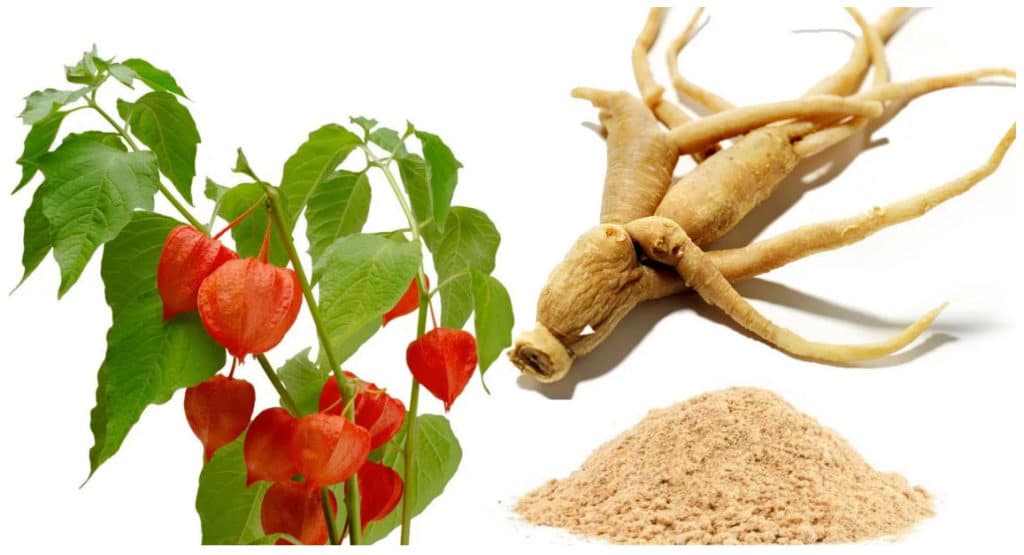CBD and kratom are two substances that have become increasingly popular in recent years. Both CBD and kratom come from plants, and both have psychoactive effects. However, the two substances work in different ways.
When trying to decide between kratom vs. CBD, it’s important to understand how they work and to know their benefits and side effects.
CBD is an endocannabinoid system product. This means that it affects the body through the same system that is responsible for the psychoactive effects of marijuana. However, CBD does not produce the same “high” that marijuana does.
Kratom, on the other hand, exerts its effects more through the opioid receptors. This means that it can produce effects similar to opioids, such as pain relief and euphoria. However, kratom can also cause side effects such as nausea and vomiting.
Researchers are still trying to understand how CBD and kratom work in the body. However, there is some evidence to suggest that CBD may be helpful in treating a variety of health conditions, including anxiety, pain, and inflammation. Kratom, on the other hand, is mostly used for its recreational effects.
Table of Contents
ToggleWhat is Kratom?
Kratom is a plant that is native to Southeast Asia and has a long history of use as a pain reliever, energy booster, and dietary supplement. The plant belongs to the Rubiaceae family, which includes coffee and other stimulants. At low doses, kratom acts as a stimulant, while at high doses, it has opiate-like effects.
The active ingredient in kratom is an alkaloid called mitragynine. Mitragynine is structurally similar to opioids like morphine and codeine, but it does not produce the same degree of intoxication or addiction. Kratom is not currently regulated by the US Food and Drug Administration (FDA), and its safety and legality are under scrutiny. (1)
Some people use kratom to self-treat pain or opioid withdrawal symptoms, while others use it recreationally for its stimulant effects. Kratom is generally safe when used in small amounts, but it can cause side effects like nausea, vomiting, and constipation. It can also be addictive when used in larger doses.
If you are considering using kratom, it is important to be aware of the potential risks and side effects. You should also check with your local laws to make sure that it is legal to possess and use kratom in your area.
What Is Kratom Best Used For?

The effects of kratom are wide-ranging, but it’s most commonly consumed as a remedy for chronic pain, anxiety, opiate withdrawal, and as an energy booster. It also has a long history of being used for a number of other ailments and symptoms. Despite being banned in several countries, kratom use is common and generally accepted in South East Asian countries like Indonesia.
An effective dose of kratom will provide users with a variety of benefits, including decreasing anxiety, reducing pain, inducing sedation, and increasing energy and productivity. Because it’s not smoked like cannabis, it takes longer to get relief with kratom. (2) The effects usually take about an hour to be felt.
Kratom is used for pain relief and boosts the immune system. It also has many health benefits for those who experience or live with chronic or acute pain. Kratom has been used as a substitute for stronger opioids like heroin, oxycodone, and fentanyl. Some have been able to use it to get off of these stronger opioids and go back to a normal life. It also helps relieve symptoms of opioid withdrawal.
Some people have reported success in using kratom to treat anxiety disorders and pain. However, more clinical research is required before one can fully endorse it as a treatment for these conditions.
How does Kratom work?
Kratom is a plant that originates from Southeast Asia. The leaves of the kratom plant contain several alkaloids, the most prominent of which is mitragynine. This alkaloid is responsible for most of the analgesic (pain-relieving) effects of kratom.
When compared to other painkillers, mitragynine is about as effective as codeine. (3) However, kratom is more effective when taken as a whole-plant extract than as an isolated molecule like mitragynine. This is because kratom also contains other biologically active compounds, like 7-hydroxymitragynine, that interact with the mu-opioid receptor.
In addition to its pain-relieving effects, kratom also affects neurotransmitters like dopamine, serotonin, and GABA. This is why kratom is sometimes used as a natural treatment for conditions like anxiety and depression.
If you’re considering taking kratom, it’s important to be aware of the potential risks and side effects. Kratom is not regulated by the FDA, so it’s important to buy it from a reputable source. It’s also important to start with a low dose and increase gradually, as kratom can have strong effects at high doses.
Side Effects and Risks
Kratom is a substance that has a wide range of potential uses. It can be used to treat a variety of conditions, but it also comes with some risks. The most common side effects of kratom include stomach pains, vomiting, itching, nausea, dry mouth, and lack of appetite. It has also been blamed for causing other, more serious issues such as epilepsy, arrhythmia, liver damage, and psychosis. However, documentation and thorough investigation into kratom’s role in these conditions is rare.
Research shows that kratom can alter the metabolism of other substances, potentially increasing their danger. Kratom should only be used by itself, without being combined with any other substances. Since vomiting is induced before an overdose occurs, kratom overdose is practically unheard of. (4)
Kratom may have a healthy use as a treatment for opioid addiction, but it also has addictive potential. In an earlier survey, 293 people were surveyed, and it found that nearly all participants showed signs of addiction following regular use for 6 months. The common physical and psychological symptoms included pain, sleeping difficulty, and anger.
In Asian countries, kratom is a pure product that can be purchased from local producers. In Western countries, however, adulterants and additives are often used to create a more potent product. These adulters and additives can cause dangerous effects. The biggest danger of kratom comes not from the drug but from mixing it with other drugs.
Is Kratom Legal?

Kratom is a natural herb that has been declared either illegal or legal in various countries, states, and regions. The legal status of kratom is under threat in many places, as it is related to opioids.
In 2016, the US Drug Enforcement Agency (DEA) attempted to ban kratom from the country, but public outcry stopped them. The DEA and the US Food and Drug Administration (FDA) subsequently considered making kratom illegal but decided not to act on the recommendations. Despite this, kratom is still legal at the national level in the United States.
However, some states have decided to make kratom illegal. Alabama, Indiana, and Tennessee have all passed laws making kratom a controlled substance. Other cities, like Denver, San Diego, and Sarasota, have banned kratom within their jurisdictions.
The legal status of kratom is constantly changing, so it’s important to stay up-to-date on the latest developments. If you’re considering using kratom, be sure to check the legal status in your area first.
What is CBD?

Cannabidiol, or CBD, is a compound found in cannabis plants. Unlike its more famous cousin, THC, CBD does not cause mind-altering psychoactive effects. CBD is typically derived from hemp plants, and extracts are used to create a wide range of products, including tinctures, capsules, edibles, and vapeable oils. You can smoke, or vape cannabis strains with high CBD levels in their plant form as well. Cannabinoids other than CBD may also be present in CBD products.
Some CBD products can also contain other cannabinoids. Leading figures in cannabis research suggest that cannabinoids work better when they are together. The so-called “entourage effect” is thought to produce synergistic therapeutic effects that are greater than the sum of the individual parts.
CBD products are legal in the US if they contain less than 0.3% THC. As long as it’s under 0.02%, the same rules apply in Europe. Depending on the country, the legal THC percentage may differ.
It is also possible to purchase and consume CBD as a single-molecule isolate. There are no other cannabinoids or terpenes found in CBD isolate. While CBD isolate may be more potent in terms of CBD concentration, the lack of other cannabinoids and terpenes means that the therapeutic effects are lessened.
What Is CBD Used For?
CBD is an active compound that occurs naturally in the cannabis plant. It is one of over 100 different cannabinoids that have been identified in the plant. CBD is a non-intoxicating compound, meaning it does not produce the “high” associated with marijuana use.
CBD has been shown to have a variety of potential therapeutic applications. One area that is under active investigation is the use of CBD for the management of epilepsy. CBD is thought to work on the endocannabinoid system, which plays a role in a variety of physiological processes, including seizure activity. (5)
In 2013, Charlotte Figi made headlines when she was given CBD to treat her severe epilepsy. Prior to trying CBD, Figi had been experiencing up to 300 seizures per week. After starting treatment with CBD, Figi’s seizure activity decreased dramatically, and she now only has a few seizures per month.
CBD is also being investigated for its potential use in the treatment of other conditions, such as joint conditions as rheumatoid arthritis. CBD is thought to have anti-inflammatory properties, which could make it a valuable treatment option for these conditions.
At this time, more research is needed to determine the full potential of CBD. However, the promising results seen so far suggest that CBD may be a safe and effective treatment option for a variety of conditions.
How Does CBD Work?
The endocannabinoid system is a complex network of cannabinoid receptors and ligands that are found in humans, animals, and plants. This system is responsible for maintaining homeostasis in the body and regulating a variety of physiological and cognitive processes.
Cannabinoid receptors, like CB1 and CB2, are found throughout the body and are activated by ligands such as THC and CBD. THC binds directly to these receptors, while CBD produces its effects indirectly.
CBD is thought to work through numerous non-cannabinoid ion channels and receptors to achieve its effects. One of these is the TRPV1 receptor, which is responsible for mediating pain, inflammation, and body temperature. CBD activates this receptor, which in turn leads to the reduction of pain and inflammation.
In addition to its direct effects on ion channels and receptors, CBD also increases the availability of anandamide in the body. Anandamide is an endogenous cannabinoid that plays a role in pain, inflammation, and other cognitive processes. By increasing the levels of anandamide in the body, CBD is able to enhance its effects.
The exact mechanisms by which CBD produces its effects are still being elucidated. However, the indirect nature by which it acts on the body suggests that it may have a wide range of therapeutic applications.
Are There Any Side Effects Or Risk When Using CBD?
CBD is a non-psychoactive compound found in cannabis that has shown promise in treating a variety of medical conditions. While CBD appears to be safe and non-addictive, there are some potential side effects that users should be aware of.
Nausea, vomiting, and diarrhea are some of the most common side effects of CBD. These symptoms are usually mild and resolve on their own after a few days. However, if they persist or become severe, it is important to see a doctor. (6)
Dizziness and drowsiness are also common side effects, especially when taking higher doses of CBD. These symptoms usually go away after a few days of use. However, if they persist, it is important to talk to a doctor.
Dry mouth is another common side effect of CBD. This can be alleviated by drinking plenty of fluids and avoiding caffeine.
CBD can also cause changes in mood and appetite. These side effects are usually mild and resolve on their own after a few days. However, if they persist or become severe, it is important to talk to a doctor.
Pregnant women and nursing mothers should avoid consuming any cannabis products, including CBD. CBD may interact with other medications that pregnant women or nursing mothers are taking, so it is important to talk to a doctor before using CBD.
Is CBD Legal?
CBD is a complex and often misunderstood compound. There is a lot of confusion surrounding its legal status, especially in the United States. So, is CBD legal?
The answer to this question depends on a few factors, including the source of the CBD and the laws of the jurisdiction in which it is being used. CBD is a grey area because hemp was federally legalized in the United States. This means that CBD derived from hemp is legal in the US, but CBD derived from marijuana is still illegal.
CBD is legal in Europe and the UK, but only if it is derived from hemp and it contains less than the legally mandated 0.02% THC. Italy, Austria, Belgium, and Romania are just a few countries where CBD is legal to buy and use.
So, if you’re considering using CBD, be sure to check the laws in your jurisdiction before proceeding.
Kratom Vs. CBD: How Do They Compare?
CBD and Kratom are two substances that have been gaining popularity in recent years for their potential to treat pain. Both CBD and Kratom come from plants, and they both contain different molecular compounds. With these differences in mind, they may have similar effects, but CBD may be more useful than Kratom in some situations.
CBD currently has a role in the research being done on pain treatments. Kratom – despite its murky legal status – is prescribed by many people to treat pain because its effectiveness is anecdotal and not clinical research. Many people with chronic pain effects self-medicate with kratom.
Kratom and CBD both show promise for treating substance withdrawal symptoms. Although they are both believed to have a positive effect on withdrawal, they each act in very different ways. Kratom interacts directly with opioid receptors, whereas CBD does not interact directly with cannabinoid receptors CB1 and CB2. Kratom is useful in the treatment of opioid addiction because it has many properties that are similar to opioids. This makes it an opioid substitute.
CBD is being tested for its potential to decrease the addictive use of cannabis. There’s been other research that has discussed the impact of CBD on opioid withdrawal. CBD and opioid withdrawal were discussed in a study published in the journal Cannabis and Cannabinoid Research in 2021. (7)
There is a great deal of concern about kratom users suffering side effects similar to those caused by other opioids. Side effects like addiction can be significant, but research has conclusively demonstrated that kratom has a short duration and reduced severity.
Kratom is known to make users sleepy and is especially dangerous in high doses. CBD does not have such effects and, as a result, users should be careful when consuming kratom since they can’t drive. CBD is preferred by some because it has a host of convenient forms. Kratom is less safe to mix with other substances, including over-the-counter drugs. It is nearly always the case that multiple substances are involved in kratom-related deaths.
CBD vs. Kratom for Pain
CBD and kratom are both known for reducing pain, which is the most striking similarity between them.
CBD uses the endocannabinoid system, which is made of receptors that control homeostasis in the body. Researchers found its use could reduce pain severity.
The mechanism of kratom is different, unlike the mechanisms of pharmaceutical opioids such as morphine and oxycontin, which bind to opioid receptors located in the brain and spinal cord and close pain-signaling pathways. The alkaloids in kratom activate these receptors, which block pain signals. Medications such as morphine and oxycontin also work through the same mechanism as Kratom.
CBD will be better for any pain stemming from inflammation. Kratom, which is better for short-term relief, will be better for any pain really. It may not be as good as CBD, but it can still provide pain relief.
CBD vs. Kratom for Sleep
If you’re struggling with insomnia, you may be wondering which natural remedy is best for you. CBD and kratom are both popular options, but which one is better?
CBD is a better sleep aid for several reasons. First, it has a sedative effect that can help you fall asleep when you’re having a difficult time. Additionally, CBD is a potent muscle relaxant that supports healthy joints, which may help prevent waking from higher cortisol levels.
Kratom is a sedative that can also have stimulant effects. While it may be helpful in some cases, it’s also a matter of hit or miss whether you will experience unfavorable side effects or greater sleep quality with this plant. Even with high doses of kratom, you may experience the ‘kratom wobble’ side effect, which is dizziness, nausea, or vomiting, and blurred vision. This plant is not good as a long-term insomnia remedy because it may cause dependence, which may make your insomnia worse.
In conclusion, CBD is a better option for those struggling with insomnia. It is more effective and has fewer side effects than kratom.
CBD vs. Kratom for Anxiety & Depression
CBD is the winner here because it has a positive effect on reducing anxiety symptoms by working on multiple pathways, including serotonin, dopamine, GABA, and glutamate, all of which are engaged with the symptoms we define as anxiety. A large-scale clinical study has confirmed the effectiveness of CBD for managing stress and anxiety, which is why its effectiveness is not rivaled by many other natural supplements. (8)
Because CBD doesn’t immediately induce euphoria, it is less effective than kratom. However, it may take some time for the brain’s neurotransmitters and electrical connections to be balanced. CBD can reduce neuroinflammation, which has been a main cause of depression. Kratom’s anti-anxiety effects are very mild and can be achieved only in higher doses. Low-dose ranges are more stimulating and can exacerbate anxiety even further.
Kratom is a psychoactive supplement that has short-lived antidepressant properties. It acts on the opioid receptors and triggers dopamine release in the brain, which can have a detrimental effect on your mood as the body becomes dependent on the effects. The high doses of kratom can be addictive and can make you dependent on the drug.
Do you need custom white label kratom products produced for your supplement business?
SEE WHAT WE CAN DO
Do you need custom private label kratom products produced for your supplement business?
SEE WHAT WE CAN DO
CBD vs. Kratom for Focus & Concentration
If you’re looking for a way to improve your focus and concentration, you may be wondering if CBD or kratom is the right choice for you. Both of these substances have been shown to offer benefits for mental clarity and focus, but they work in different ways.
CBD is known to affect mental clarity and focus, but only when people are stressed or anxious. This means that if you’re not feeling stressed or anxious, CBD may not be the right choice for you. However, if you are feeling stressed or anxious, CBD can help to improve your focus and concentration.
Kratom, on the other hand, is a better stimulant than caffeine. This means that if you’re looking for a way to boost your productivity, kratom may be a better choice for you. When taken, kratom stimulates brain activity and makes you feel more alert and awake. It takes 30 minutes for the effects of kratom to kick in and can last for up to three hours.
So, which is the right choice for you? CBD or kratom? If you’re feeling stressed or anxious, CBD may be the better choice. However, if you’re looking for a way to boost your productivity, kratom may be the better choice.
CBD vs. Kratom for Immune System
When it comes to boosting immune system function, both CBD and kratom have been shown to be effective in animal studies. CBD regulates the immune system through the endocannabinoid system and has even demonstrated the ability to deal with antibiotic-resistant bacteria. It has also been shown in animal studies that certain components of kratom have anti-inflammatory properties – like daucosterol, an alkaloid called isopteropodine, and a saponin called daucostrol. (9)
However, it’s important to note that these results have not yet been replicated in human studies. So while CBD and kratom may both be helpful in supporting a healthy immune system, more research is needed to confirm these effects in humans.
A Comparison of CBD And Kratom’s Safety Profiles

When it comes to the safety of CBD and Kratom, there are some key differences between the two substances. CBD has a safe range and is relatively non-habit-forming. This means that CBD is not likely to cause any serious side effects, even when taken in high doses. Additionally, CBD does not bind to the CB1 receptor in the brain, which means it doesn’t directly stimulate a surge of dopamine.
Kratom, on the other hand, reports a significant number of deaths caused by its overdose. Kratom is also habit-forming, which means that it can lead to addiction and dependency over time. Some side effects of using Kratom are nausea, low blood pressure, and dizziness. The chances of becoming addicted to Kratom are much lower than with prescription painkillers or illegal drugs like heroin or cocaine, but the potential for addiction is still much higher than with cannabis.
Overall, CBD appears to be the safer option when compared to Kratom. CBD has a wide safety profile and is not habit-forming, while Kratom has a narrow safety profile and is habit-forming. If you are considering using either substance, be sure to speak with a healthcare professional to ensure that it is safe for you to do so.
CBD vs. Kratom: What Does The Law Say?
The legal status of CBD and kratom is a complicated and often confusing topic. Both substances have a long, complicated history with legal regulations.
Cannabis is now legal again in many countries, and so too is kratom. However, the laws surrounding these substances are still murky and often confusing.
The regulation of CBD is much less strict than that of kratom. It is legal in most places across the world, provided that it is from the hemp plant. Hemp is a fibrous variety of Cannabis sativa that contains less than 0.3% THC or less by dried weight. Anything exceeding this limit is considered marijuana, which is still illegal in most countries (the known exceptions are Uruguay, Canada, and Malta).
Kratom laws are much murkier. Some countries have banned it outright, driven by the fear of its addictive potential. Others use it as an alternative to prescription analgesics that are even more addictive.
Below is a brief summary of the CBD and kratom laws in different countries around the world.
CBD Laws Around the World
Overall, CBD is legal in most places across the world. The exceptions are a few countries where CBD is either completely banned or only available with a special prescription.
In the United States, CBD is legal at the federal level as long as it is derived from hemp. Hemp is a variety of Cannabis sativa that contains less than 0.3% THC by dry weight. Anything above this limit is considered marijuana and is still illegal under federal law. However, individual states have the power to legalize or ban CBD (and marijuana) as they see fit.
In Canada, CBD is legal nationwide. CBD can be derived from either hemp or marijuana, but the laws are different depending on the source. CBD derived from hemp is legal as long as it contains less than 0.3% THC. CBD derived from marijuana is only legal with a doctor’s prescription.
In the United Kingdom, CBD is legal as long as it is derived from hemp and contains less than 0.2% THC.
In Australia, CBD is legal as long as it is derived from hemp and contains less than 0.3% THC.
In New Zealand, CBD is legal as long as it is derived from hemp and contains less than 0.3% THC.
Kratom Laws Around the World
Kratom laws are much more complicated than CBD laws. In some countries, kratom is completely banned. In others, it is legal but only available with a prescription. And in still others, there are no regulations at all.
In the United States, kratom is legal in most states but not all. There are a few states where kratom is completely banned, such as Alabama, Arkansas, Indiana, Tennessee, and Wisconsin. In other states, kratom is legal but only available with a prescription, such as Florida and Virginia. And in the remaining states, there are no regulations at all.
In Canada, kratom is legal but only available with a doctor’s prescription.
In the United Kingdom, kratom is legal but only available with a doctor’s prescription.
In Australia, kratom is legal but only available with a doctor’s prescription.
In New Zealand, kratom is legal but only available with a doctor’s prescription.
As you can see, the legal status of CBD and kratom varies widely from country to country. It is important to research the laws in your own country before buying or consuming either substance.
Can CBD and Kratom be taken together?
The potential side effects of using CBD and kratom together can increase the risk of health problems. While there are many benefits to taking both of these compounds, it’s important to be aware of the potential risks before doing so.
The best way to make the most of CBD and kratom is to combine them in a low-to-moderate dose and take them both together so that you can reduce the anxious side effects. In order to get the most benefit from kratom powder, you should combine it with 20 milligrams of CBD oil dissolved in water. Ideally, you should also avoid other stimulants, such as coffee, in this combo. Wait at least 60 minutes before taking more of either compound.
What are the differences between marijuana and kratom?
Both plants are bred in a variety of strains, each with its own unique set of effects. When it comes to pain relief, the best strains of kratom are red vein Bali, Borneo, or Indo. For marijuana, the best strains for pain relief are usually heavy indicas like Afghan and Hindu Kush.
Kratom has a wide range of effects, and when consumed at low doses, it can have a beneficial effect. When consumed at higher doses, it can completely eliminate pain, but the cognitive effects will become unpredictable. Cannabis, when consumed at higher doses, has a similar effect on pain and even stronger cognitive effects. To counteract this, some medical marijuana users microdose with smaller amounts (0.1 to 0.3 grams) to get some pain relief without sacrificing too much cognitive ability.
Both kratom and marijuana are known to provide some relief from anxiety but can also make it worse in some users. Kratom is less likely to worsen anxiety, while marijuana is more likely to exacerbate it.
Kratom’s legal status makes it safer to acquire and use than marijuana in most places in the world, with the exception of places where marijuana is also legal. However, if marijuana becomes legal in more places, kratom may not be the better option.
Summary – The Differences Between CBD and Kratom
CBD and kratom are two substances that have many effects in common. Both can be used for pain relief, and both have sedative effects. However, they each use completely different mechanisms to achieve these effects.
CBD uses the endocannabinoid system to modulate neuroregulation. The endocannabinoid system is a system of receptors and ligands that is found in all mammals. It is responsible for maintaining homeostasis, or balance, in the body. CBD binds to receptors in the endocannabinoid system and modulates their activity. This helps to regulate various functions in the body, including mood, sleep, and appetite.
Kratom, on the other hand, is a stimulant of the central nervous system. It works mostly the same as caffeine. Kratom also works on the body’s endogenous opiate system to provide acute pain relief. The endogenous opiate system is a system of receptors that are found in the brain and spinal cord. Kratom binds to these receptors and activates them. This helps to reduce pain signals in the body.
Mixing CBD and kratom should be approached with caution and only after you’ve had a couple of sessions with both compounds separately. This is because they work via different mechanisms and could potentially cancel each other out. Start with a low dose of each compound and increase gradually as needed.
References
- https://www.fda.gov/news-events/public-health-focus/fda-and-kratom
- https://www.webmd.com/diet/health-benefits-kratom
- https://www.emcdda.europa.eu/publications/drug-profiles/kratom_en
- https://www.ncbi.nlm.nih.gov/pmc/articles/PMC8924421/
- https://www.ncbi.nlm.nih.gov/pmc/articles/PMC6514832/
- https://www.mayoclinic.org/drugs-supplements/cannabidiol-oral-route/side-effects/drg-20443842
- https://www.liebertpub.com/doi/abs/10.1089/can.2021.0089
- https://www.ncbi.nlm.nih.gov/pmc/articles/PMC4604171/
- https://www.ncbi.nlm.nih.gov/pmc/articles/PMC5402527/








